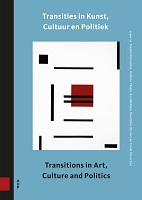Chapter Het baton-plafond
| dc.contributor.author | Wennekes, Emile | |
| dc.date.accessioned | 2023-10-12T13:14:12Z | |
| dc.date.available | 2023-10-12T13:14:12Z | |
| dc.date.issued | 2023 | |
| dc.identifier | ONIX_20231012_9789048560110_22 | |
| dc.identifier.uri | https://library.oapen.org/handle/20.500.12657/76696 | |
| dc.language | Dutch | |
| dc.subject.other | female musicians | |
| dc.subject.other | symphony orchestras | |
| dc.subject.other | Lydia Tár | |
| dc.subject.other | baton barrier | |
| dc.title | Chapter Het baton-plafond | |
| dc.type | chapter | |
| oapen.abstract.otherlanguage | It remains very exceptional when highly gifted women musicians are crowned maestra, conductor of a symphony orchestra. There are various explanations for this deprivation. Contextualised in historical and statistical data, this article zooms in on what I refer to as the ‘baton barrier’. Not so much of an invisible boundary as has become known as the glass ceiling, preventing women their upward mobility, for ages, this musical barrier has been in our face: literally, the image, the portrayal of the traditionally masculine orchestral director. | |
| oapen.identifier.doi | 10.5117/9789048560110_wennekes | |
| oapen.relation.isPublishedBy | dd3d1a33-0ac2-4cfe-a101-355ae1bd857a | |
| oapen.relation.isPartOfBook | 95ba63c0-4a4a-4684-a56c-73ba347aa51b | |
| oapen.relation.isFundedBy | b586072e-2e5d-469f-8332-217c0beb5b08 | |
| oapen.relation.isFundedBy | 4d864437-7722-4c66-b80f-140a98d4bca9 | |
| oapen.relation.isbn | 9789048560110 | |
| oapen.relation.isbn | 9789048560127 | |
| oapen.pages | 9 | |
| oapen.place.publication | Amsterdam | |
| oapen.grant.number | [...] | |
| oapen.grant.number | [...] |

